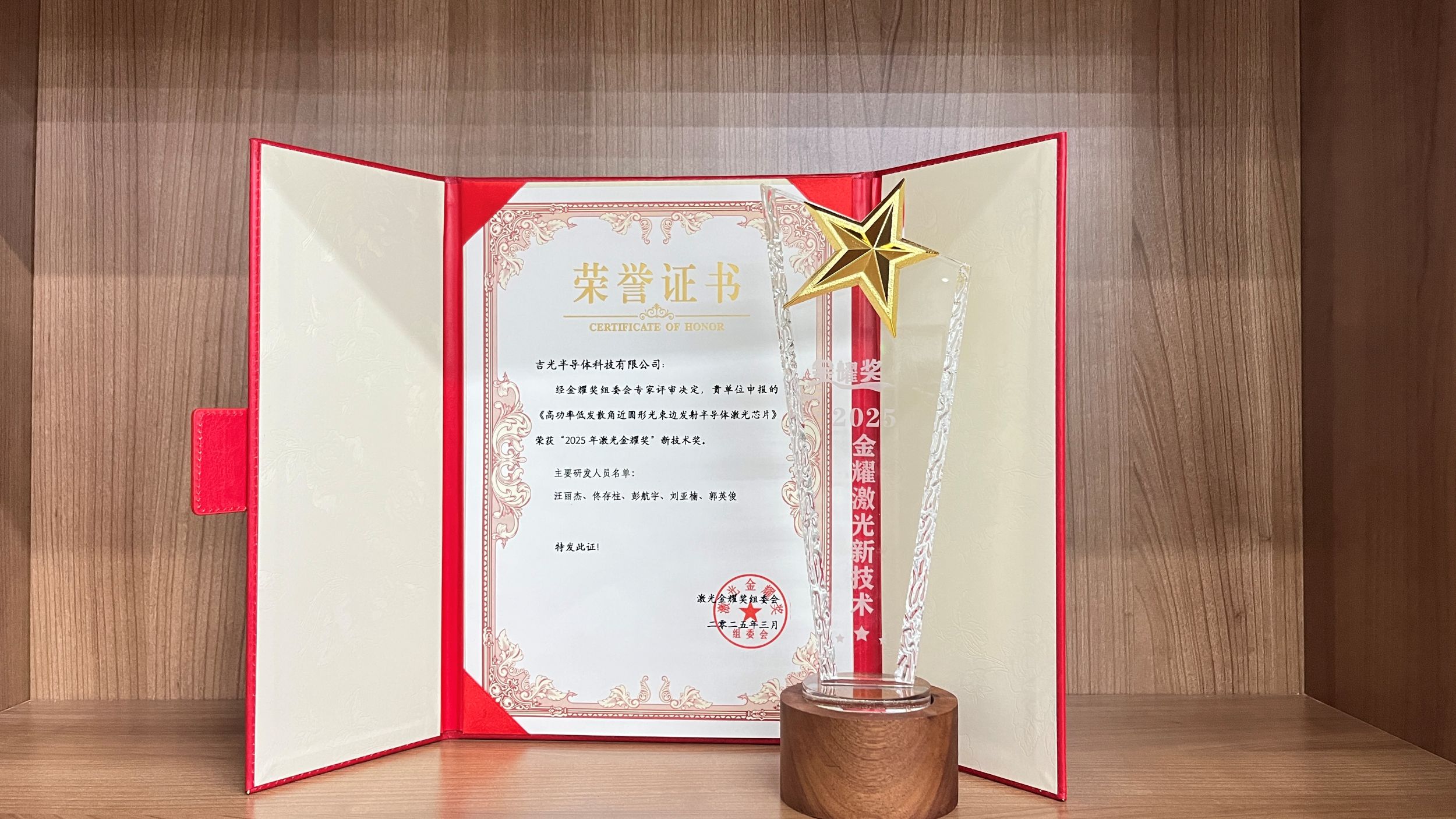-
 Search
Search
-
 中文
中文
 Search
Search
 中文
中文

Key highlights: On March 10, 2025, the 5th Glorious Laser Award Ceremony was successfully held in Shanghai. At this event, Jlight was honored with the 2025 Glorious Laser Award – New Technology Prize for its "High-Power, Low-Divergence, Near-Circular Beam Edge-Emitting Semiconductor Laser Chip."
On March 10, 2025, the 5th Glorious Laser Award Ceremony was successfully held in Shanghai. The award, supported by the Laser Processing Committee of the Chinese Optical Society and jointly established with several authoritative institutions in the industry, aims to recognize forward-looking, innovative, and leading new technologies, products, and applications that have a significant impact on China’s laser industry. It has received widespread attention from the laser sector and downstream application enterprises. At this event, Jlight Semiconductor Technology Co., Ltd. (hereinafter referred to as "Jlight") was honored with the 2025 Glorious Laser Award – New Technology Prize for its "High-Power, Low-Divergence, Near-Circular Beam Edge-Emitting Semiconductor Laser Chip."

High-power edge-emitting semiconductor lasers play a critical role in many applications, but they have long faced issues such as large fast-axis divergence angles (typically >50° for 95% energy containment) and elliptical beam shapes. These limitations often require separate collimation of the fast and slow axes, increasing system complexity and cost. The root cause lies in the conventional epitaxial structure of edge-emitting lasers, which typically uses a narrow total internal reflection waveguide.
To address this, Jlight developed a double-sided Bragg reflection waveguide structure, leveraging photonic bandgap effects to confine the optical field and introducing optical defect layers to suppress local waveguide effects. This approach expands the fast-axis mode size to over 10 μm while maintaining stable single transverse mode operation, thereby significantly reducing the fast-axis divergence angle (to less than 15° for 95% energy containment). A larger optical mode also reduces power density, raising the catastrophic optical damage threshold. Using this technology, Jlight has successfully developed high-power, near-circular beam edge-emitting laser chips across multiple wavelengths which simplify optical system design, improve fiber coupling efficiency, and reduce overall application costs.
905 nm single emitter: QCW output power > 27 W, pulse output > 50 W, fast-axis divergence < 15° (95% energy), enabling simplified beam shaping and higher spatial resolution.
976 nm single-mode laser chip: Continuous output > 1 W, fast-axis divergence < 15° (95% energy), with excellent mode field matching to single-mode fiber. Even using flat-end fibers, coupling efficiency exceeds 65%, significantly lowering system costs.
This innovation begins at the epitaxial design level, tackling divergence and beam-shaping issues at the source. The technology demonstrates unique advantages and is adaptable across different material systems, holding strong potential to drive semiconductor laser applications forward at the chip level.
Looking ahead, Jlight will continue to refine its market-driven innovation strategy, enhance independent control over key technologies, and improve coordination across the industry chain. These efforts aim to accelerate the development and commercialization of core laser components.